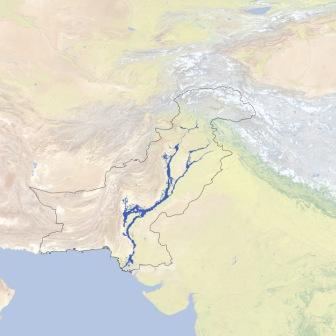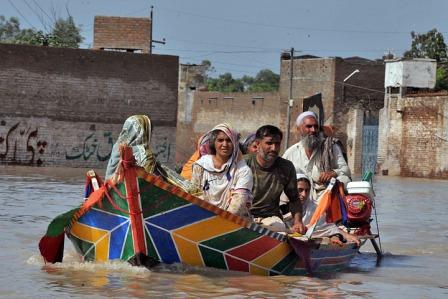Droughts and Floods
Changing with the seasons: How Himalayan communities cope with climate change - A report by Peoples’ Science Institute
Posted on 14 Jun, 2011 10:51 PMMountain areas and communities are susceptible to climate change. This work also yielded evidence of the coping strategies developed by the communities to deal with an unprecedented and only partially understood threat. This paper describes these strategies and attempts to assess the vulnerability of the communities in each valley.
Accessing safe drinking water during floods in North Bihar
Posted on 13 Jun, 2011 03:23 PMThis season in the region is commonly referred to as – Barh (flood). For centuries local people have treated it as ‘a way of life’, and found ways to deal with it. Post independence, this ‘way of life’ gradually transformed into an assured annual devastation. The once self-sufficient communities in the flood plains have been relegated to being highly dependent on sources external to the village for their survival during floods.
Inviting abstracts for documenting flood-induced conflicts in India - Apply by 8th June, 2011
Posted on 26 May, 2011 12:57 PM
The Forum for Policy Dialogue on Water Conflicts in India, a network of organisations and individuals having interest, experience and expertise in understanding conflicts arising around water in the country and exploring options to resolve these water conflicts in the interests of peace and equitable sharing, management and development of water resources. The Forum presently is in its second phase of work and the focus is on conflict documentation, conflict resolution and conflict prevention. Hence, an effort to document flood induced conflicts in India, an issue that has remained unexplored until date. In fact in its first phase the Forum had documented more than 60 cases of different types of water conflicts and this compendium has published by Routledge as a book: Water Conflicts in India: A Million Revolts in the Making.
Water scarcity in adivasi villages in Dungarpur, Rajasthan - Audio updates from CGNet Swara
Posted on 19 May, 2011 11:18 AMFlood extent in Pakistan - Updates from NASA Earth Observatory
Posted on 26 Apr, 2011 11:41 AM
La Niña conditions increased atmospheric moisture and an unusual pattern in the jet stream trapped rainy weather over the country. According to the Pakistan Meteorological Department, nationwide rain totals were 70 percent above normal in July, and 102 percent above normal in August.

Call for ICSSR fellowship (Research Assistant Position) on 'Drought Vulnerability & Mitigation Analysis' at NIDM, New Delhi
Posted on 18 Apr, 2011 11:57 AMUnder its responsive role the Indian Council of Social Science Research (ICSSR) has an elaborate programme of supporting research to individual scholars by offering them fellowships at different levels in social science disciplines.
ICSSR has granted a research project at National Institute of Disaster Management (NIDM) on 'Vulnerability Assessment and Mitigation Analysis for Drought Risk in Bundelkhand' for 15 months period. Fellow will be advised/promoted to register for Ph.D. in a University.
Transparent & participatory governance in functioning of the decision-making committees on water resources
Posted on 16 Apr, 2011 03:46 PMTo
Shri Salman Khurshid,
Union Minister of Water Resources,
Shramshakti Bhawan,
Rafi Marg,
New Delhi - 110001
2. Secretary, Union Ministry of Water Resources
3. Chairman, Central Water Commission
4. Deputy Chairman, Planning Commission
5. Member (Water), Planning Commission
6. Ms Aruna Roy, Chairperson, Working Group on Transparency, Accountability, Governance at National Advisory Council
Heavy rains and dry lands don t mix: Reflections on the 2010 Pakistan flood - Article from NASA Earth Observatory
Posted on 16 Apr, 2011 03:42 PM Flooding forced millions of Pakistanis to flee their homes in July and August 2010.
Flooding forced millions of Pakistanis to flee their homes in July and August 2010.
The summer of 2010 was different. In July and August, rain fell over most of Pakistan and persisted in some places for weeks.
Lingering floods in Pakistan - Updates from Earth Observatory
Posted on 15 Apr, 2011 09:49 AM
A combination of factors, including La Niña and a strange jet stream pattern, caused devastating floods. The Indus River rapidly rose, and a dam failure in Sindh Province sent part of the river down an alternate channel. The resulting floodwater lake lingered for months, leaving crops, roads, airports, even entire communities underwater.




